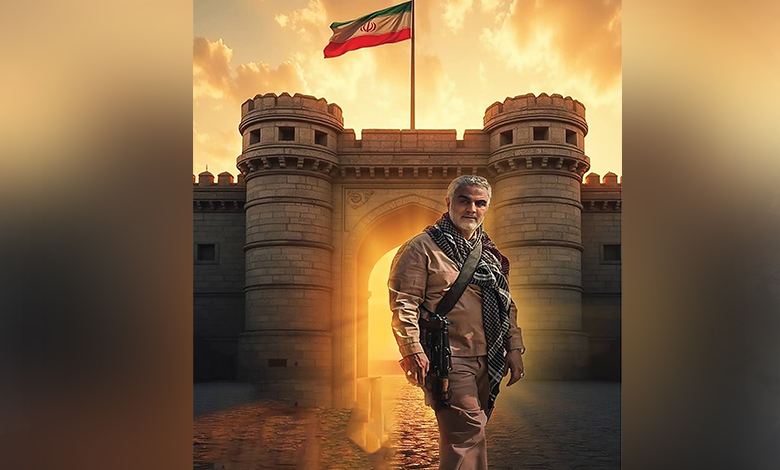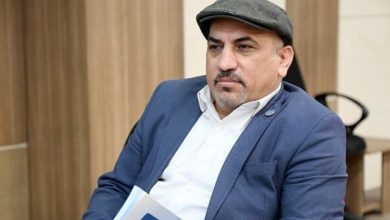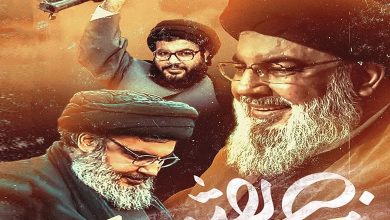Part Three: Diplomacy on the Ground – Soleimani’s Initiative in Engineering Fronts (Section One)

 Political Section
Political Section
Field Diplomacy – Soleimani’s Initiative in Engineering Fronts
In the formation of the Resistance Axis, the main challenge was not the number of fronts or the volume of equipment, but how to transform this immense diversity into a strategic and unified power capable of withstanding threats and expanding its influence. At the heart of this project, Martyr Haj Qasem Soleimani emerged not only as an outstanding military commander but also as a political engineer on the ground who pioneered a new style of diplomacy, known as “field diplomacy.” This approach, linking military action with political strategy, enabled Soleimani to turn challenges into opportunities, build unconventional alliances, and achieve simultaneous victories in both military and political spheres.
Martyr Soleimani was more than a military commander; he embodied the intelligent integration of diplomacy and field power, acting as a dynamic map of gunpowder and fire with a decisive presence in the heart of political battlegrounds. He employed diplomacy in a new style—not in closed halls or with ceremonial smiles—but by relying on ground realities, field developments, coalition flexibility, and steadfast principles.
1. An Intelligent Link Between Weapons and Politics
Soleimani broke the traditional boundaries between military operations and diplomacy. He not only led battlefields but also demonstrated skill in political negotiations. His presence on the frontlines fostered trust with diverse groups, coordinated decisions, and leveraged military victories for broader political objectives.
Through this smart synergy, he extended the strategic depth of the Islamic Republic from Iran’s borders to Syria and the Mediterranean coast, achieving this through military presence combined with a holistic vision that redefined regional power balances.
2. A Multifaceted and Inclusive Personality
Haj Qasem’s personality combined intelligence, military prudence, and political acumen. With knowledge of warfare and diplomatic skills, he could manage complex relationships with diverse groups and national leaders simultaneously. This balance made him respected even among his adversaries.
Soleimani symbolized comprehensive leadership; a figure capable of impacting multiple domains, achieving what traditional diplomacy could not accomplish on the ground.
3. Engineering Unconventional Field Alliances
Soleimani’s approach to coalition-building was based on embracing diversity. Rather than enforcing uniformity, he maintained the independent identities of groups while organizing them within a strategic framework.
His alliances spanned from Lebanon to Syria, Iraq, Bahrain, Yemen, and even Pakistani and Afghan fighters. Beyond his official role, his deep understanding, attentive listening, and ethical-political leadership made him their primary reference.
These alliances were founded on shared beliefs, such as justice-seeking and resistance against Western hegemony, without being confined to any specific ethnicity or religion.
4. From Fighting ISIS to Redrawing the Regional Map
In Iraq, Soleimani was the architect of uniting various groups under the Popular Mobilization Forces (PMF), playing a decisive role in defeating ISIS and restoring stability.
In Syria, by supporting the legitimate government and aiding the recapture of key territories, he prevented the country’s collapse.
In Lebanon, he strengthened resistance against pressures, turning Hezbollah into the backbone of the Resistance Axis.
These actions were part of a strategic project aimed at reinforcing the region against fragmentation and American-Zionist domination.
5. Unconditional Commitment to the Supreme Leader
Soleimani exemplified unwavering loyalty to the guidance of Imam Khamenei. Facing threats from Trump and negotiation proposals, he boldly declared: “Trump, the gambler, I am your rival!”
This commitment was not a superficial slogan but a practical expression of the ideals of the Islamic Revolution, enhancing his legitimacy and influence in the region.
6. Field Diplomacy: Soleimani and the Geometry of Resistance Fronts
A prime example of his vision was Iraq after 2014. Confronting ISIS, his role extended beyond military support to establishing political understandings and prioritizing combat over internal distractions.
In Syria, his presence was more than technical assistance; it aimed to shape new deterrence equations that prevented government collapse and limited the spread of the crisis.
In Lebanon, he coordinated precisely between resistance and political necessities without undermining national sovereignty.
Soleimani’s diplomacy did not only ally with friends; he had a deep understanding of enemies. He grasped America’s nature, knew when to escalate or send messages, and consistently increased the costs of opposing the Resistance Axis.
Many of his initiatives were quietly executed, like special operations, reflecting the genius of this new diplomacy—a diplomacy that begins from the ground, feeds on balance, and produces results when others fail at establishing just peace.
Soleimani believed war and diplomacy were not contradictory but complementary. He turned contact lines into negotiation platforms, transformed resistance grounds into political leverage, and wrote messages with the blood of martyrs that could not be read with ink.
Haj Qasem Soleimani’s legacy extends beyond his military victories. Through field diplomacy, he uniquely integrated weaponry and politics. With his multifaceted personality, unconventional coalition-building, and unwavering loyalty to the Supreme Leader, he redefined the region and transformed the Resistance Axis into an invincible force. The “Soleimani school” remains a living model for future generations—a template of strategic leadership in confronting immense challenges. His martyrdom did not end his influence; it solidified his timeless position as an unparalleled symbol of resistance and the unmatched architect of the fronts, inspiring generations to come.







